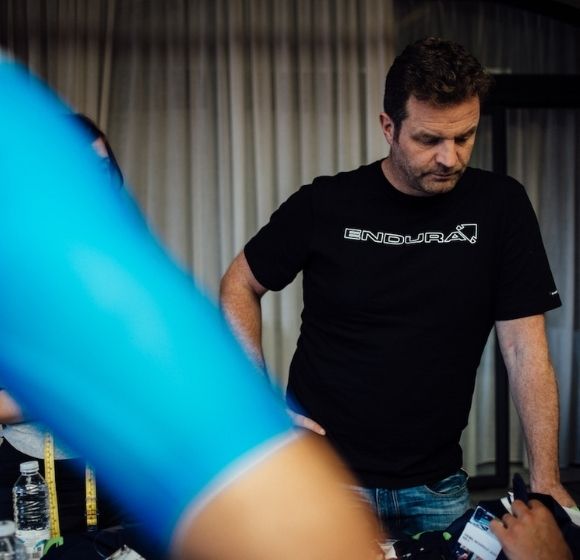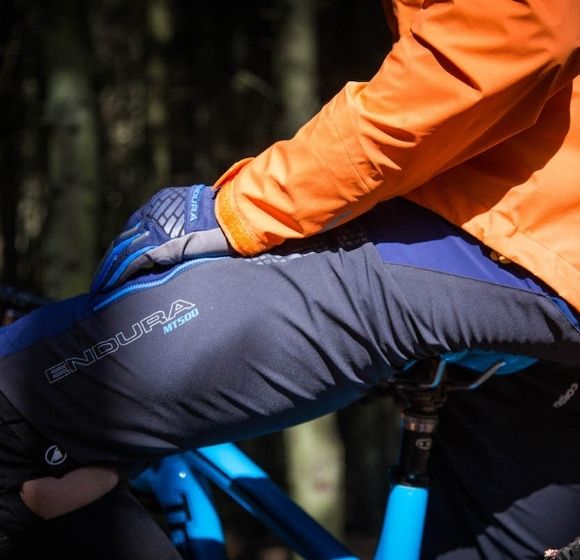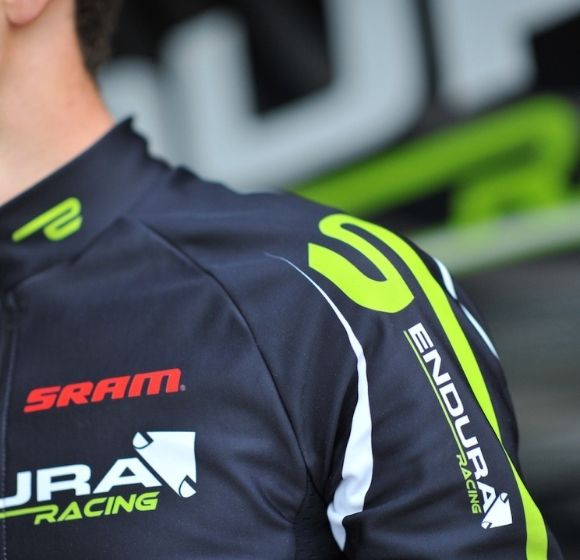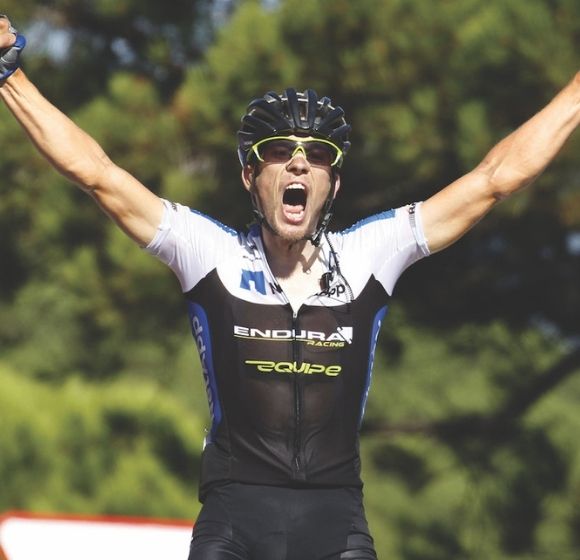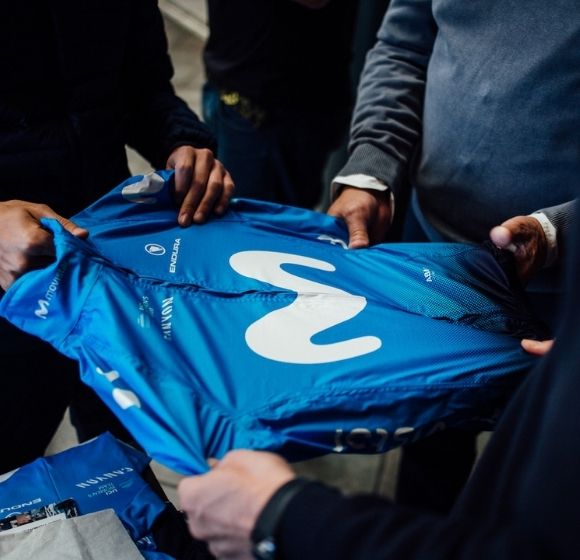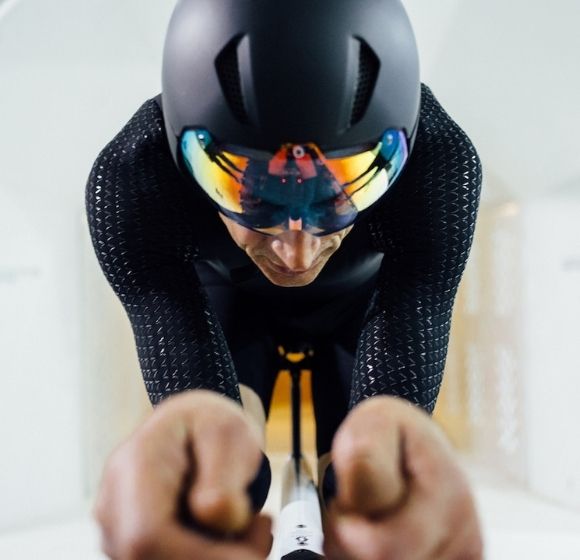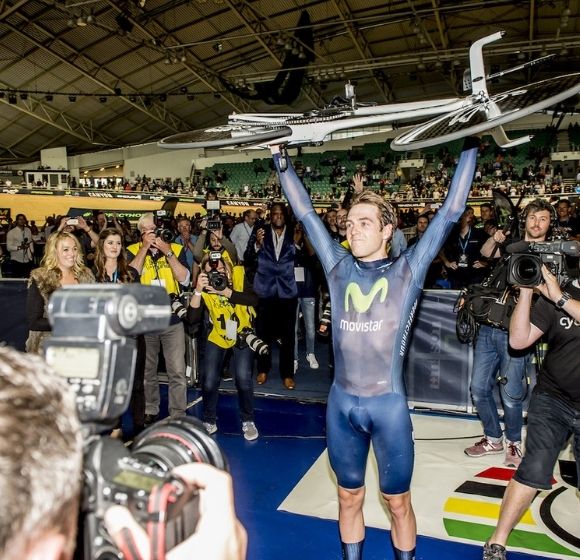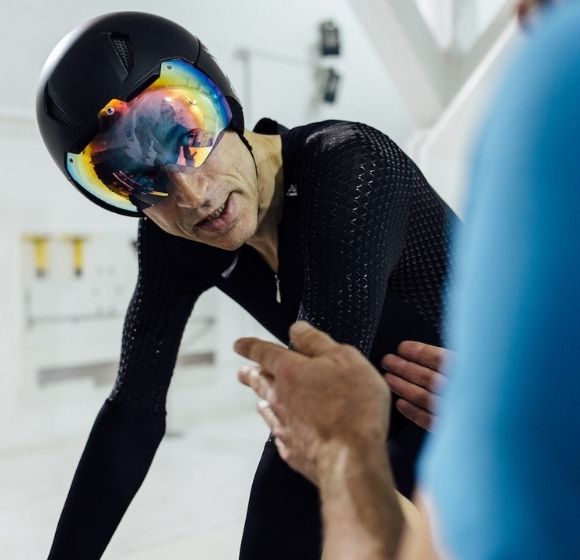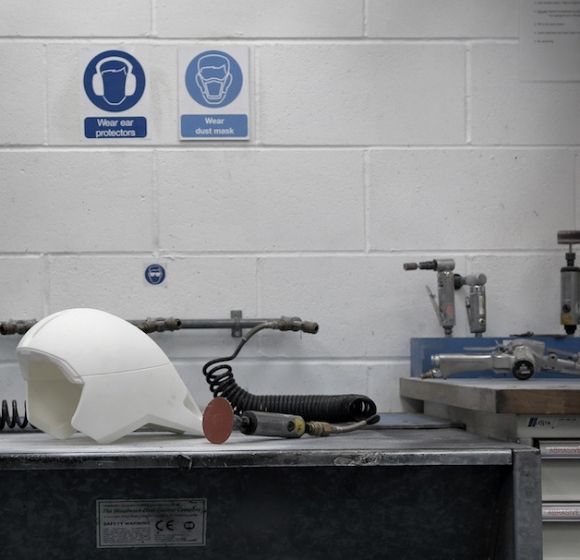
25 YEARS OF SPEED
A brief history of Renegade Progress
SPEED CENTRIC
There are products that form a connection between a brand and its customers: a favourite jersey, made so by the memory of an unforgettable ride, a speed suit that brought a personal best within reach, a helmet that kept a loved one safe.
"At the centre, you will find Endura, 25 years young and growing stronger each day; governed by a philosophy of Renegade Progress, and driven by an obsession with speed, traceable to its earliest days."
There are teams and riders, races won, records broken, and accident and injury, too; moments of disaster in which the strength of the relationship between sponsor and athlete can be gauged with the greatest accuracy.
There are events, often not without significant cost, that amount to nothing more than a giving back; episodes in the life of a company that cannot be recorded on a spreadsheet, but which have a value greater than any that might be expressed in numerical terms.
There is Graeme Obree and Alex Dowsett, Bridie O’Donnell and Vittoria Bussi. There is Movistar Team and Cervélo Bigla, Nairo Quintana and Alejandro Valverde, Ashleigh Moolman-Pasio and Lotta Lepistö. There is Danny MacAskill and Trek Factory Racing, Tim Don and Rachel Joyce, Joe Skipper, Lucy Charles and Nils Frommhold.
There are victories in Grand Tours and Monument Classics, Hour Records claimed (and Ironman records, too), adventures and escapades, gruelling feats of endurance, and heart-stopping tricks. There is ’cross and mountain, time-trials and triathlon, free rides, trail rides, night rides and stolen rides; road and track and gravel and mud, and all points in between.
At the centre of it all, you will find Endura: 25 years young, and growing stronger each day, governed by a philosophy of Renegade Progress and driven by an obsession with speed that can be traced to its earliest days, via Obree, Hoy, Wiggins et al. The best of the best. The fastest of the fast.
Endura’s position at the sharp end of cycle sport is no recent development. The briefest glance at its history confirms as much…
ANOTHER COUNTRY
Cast your mind back 25 years. The Sunday morning time-trial is the backbone of the road scene. Mountain biking is cycling’s new frontier. Roadies dress in last year’s ProTeam kit, purchased at a knockdown price, while the new school, forging their skills in a white heat of fully rigid frames and centre-pull brakes, tend to crash hard and often. Replacing shorts becomes a frequent and expensive necessity.
This is not an age of bankers riding pro level machinery, or of sophisticated mountain bikes, purchased for five figure sums. It is not a sport, in either code, that newspaper editors are desperate to splash across the glossy pages of their Sunday supplements. It is not a market in which City analysts see unrivalled growth potential. Cycling, in short, does not represent an opportunity to get rich quick.
“I was working on a kitchen table in my flat in Edinburgh, with nothing much to lose, stitching up different pairs of bibshorts, then going for a ride to see what worked and what didn’t.” Jim McFarlane
Despite, and perhaps even because of this, a young entrepreneur called Jim McFarlane sees a sport in which he’d like to establish a business. He’s a resourceful young man, trained as an engineer, but working as a management consultant, and who, still in his early twenties, seeks a change from 100-hour working weeks in London and Sydney, advising multi-billion pound companies on strategies, mergers and acquisitions. He seeks a return home to Scotland, and a reconnection with his first love, cycling.
“I had no background in textiles,” he says, recalling his earliest endeavours with needle and thread; experiments that laid the foundations for a business called Endura. “I was mucking about, working on a kitchen table in my flat in Edinburgh, with nothing much to lose, stitching up different pairs of bibshorts, then going for a ride and seeing what worked and what didn’t.”
He laughs at the memory of these formative creations, the first of which continued below his knees. He swiftly destroyed the evidence, but wishes now that he’d kept such an idiosyncratic prototype as lasting evidence for how far the business has evolved.
“If you want to show progress, make sure you start from a low base, and I definitely delivered myself a low base!” he says, chuckling. “But it’s not that hard to stitch up a pair of cycle shorts and to get the right pad, and things improved from there.”
SHORT STORY
Making bibshorts was far removed from the engineering McFarlane had first experienced, sponsored by Ford to study as an undergraduate. The drawing closer to his love of motorsport, however, had taken longer than he bargained for, and the realities of large scale engineering had dampened his enthusiasm. The motor industry seemed an environment in which “everything took forever and involved hundreds of people.”
Making cycle shorts, however, could be done alone; in the prototype phase, at least. Satisfied that he had grasped the fundamentals, and having embraced the separate, but coincidental revolutions of mountain biking and synthetic pads (the former by purchasing an Orange Prestige; the latter by exploring the wares of Schoeller and Eschler), he sought a voice of experience.
“Endura is a business founded on the principle of making things. Ask McFarlane to describe his most satisfying role, and the answer is clear: ‘Developing good product.’”
McFarlane’s search for insight led to Mike Sweatman, co-founder of the Edinburgh Bicycle Coop. Sweatman reported that mountain bikers were tearing through shorts at a rate the market was unlikely to sustain. From such valuable advice, Endura’s first iconic product was born.
“It was called the MT500 short, right from the off,” McFarlane recalls. “I used Cordura lycra, Kevlar thread, and slip liner panels, so you didn’t tear your skin off. It was built entirely around the concept, if you’re going to crash, this is the short you want to crash in. It had a very singular target and purpose.
“I had ridden in other people’s products, to see if they were any good or not, and literally taken them to pieces. What I ended up with was my own thing. The MT500 shorts used entirely different materials and different shaping; things that didn’t exist in the shorts I’d looked at initially.”
MT500 has grown to become a collection, with Danny MacAskill among those who regard it as ‘go to’ trail wear. The MT500 Jacket II has won countless awards, and the original short has evolved through countless iterations.
Still, the tale of Endura’s first product is instructive: it is a business founded, from its earliest days, on the principle of making things. Ask McFarlane to identify his most satisfying role, and the answer is clear: “Developing good product.’”
RACING INSTINCT
The racing instinct unites Endura and partners as diverse as Condor Cycles and Cervélo. Cycle sport, in any form, remains a touchstone for the industry. A glance at Endura’s roster of world class athletes confirms as much.
The story of Endura Racing could command an article by itself. While the team’s greatest triumph, overall victory at the 2012 Tour of Britain, was sullied by the subsequent ban of leader Jonathan Tiernan-Locke, it launched the careers of a host of riders whose integrity is unquestioned, and spawned the Pro Continental team NetApp-Endura.
“We funded the team a bit more and worked our way up the rankings.That culminated in races like Haut Var, the Tour of the Med, and the Tour of Britain.” Jim McFarlane
Typically for McFarlane, Endura Racing began as a vehicle to give something back: to Scottish cycle sport, in the broadest sense, and, more specifically, to Pedal Power, the dealer closest to Endura’s headquarters in Livingston, run by former Scottish mountain bike champion Jonny McBain.
“Because Jonny’s a racer, both road and mountain - he’s that proper, old school, hard man shop pro - his shop had a team. We were talking, and I just thought we should be more involved,” McFarlane explains.
“Jonny had an ambition to try and make the team Scotland’s premier team, if you like, and I thought it would be fun to be involved, and we’d get some more direct feedback from the guys who were out in all weathers.
“So it was Endura-Pedal Power for the first year [2009] and it worked pretty well. I don’t want to say we got sucked in, but then it becomes, ‘What’s the next level up?’. Then you become UCI Continental licensed, and gain access to races like the Lincoln GP.
“We ended up funding the team a bit more and changing its name to Endura Racing, with Pedal Power still there in support. We worked our way up through the rankings, as a UCI Continental team, and that culminated in races like Haut Var, the Tour of the Med, the Tour of Britain, and so on.”
NEXT LEVEL
The NetApp-Endura team provided McFarlane with Endura’s most satisfying sporting result. When Leopold König surged clear of a group containing Ivan Basso and Nicolas Roche at the 2013 Vuelta a España, en route to the summit of Peñas Blancas, he provided a crystallising moment in the brand’s history: a first Grand Tour stage victory.
While NetApp-Endura competed at a higher level than its Endura Racing predecessor, Endura served as sponsor to the team, rather than its owner. The ability to compete in the sport’s most historic races, and against its biggest teams, was achieved not only at reduced financial cost, but required less emotional investment, too.
“When Leo König won our first Grand Tour stage, in La Vuelta España, at a mountain top, that felt really special. I thought: ‘We’ve really done something. We’ve come a long way in a short time.’” Jim McFarlane
McFarlane had always remained keenly aware of the dangers of running a team as “a vehicle for ego", and considered the role of sponsor more suitable than that of team owner. The opportunity to partner with Team NetApp provided a new level of success.
“I think when Leo König won our first Grand Tour stage, in La Vuelta, at a mountain top, that felt really special. We saw him on TV, his last attack, sitting up as he crossed the line of a mountain top finish, with Endura emblazoned across his chest. I thought: ‘We've really done something. We’ve come a long way in a short time.’”
The anecdotes spawned by the three years of “chaos” wrought by Endura Racing are among the most cherished at the brand’s Livingston headquarters. Tales of the team’s first pre-season training camp, held at a hotel in Nice owned by Triple Crown winner Stephen Roche, prior to its debut at the Tour of the Med, are priceless and deserve a separate treatment.
Team NetApp-Endura, however, serves as a fine example of McFarlane’s ability to separate his head from his heart, and to make decisions for the greater good. Endura’s two-year partnership with NetApp yielded success and valuable experience. Most importantly, it paved the way to an ongoing relationship with Movistar Team, the Spanish grandees of the UCI WorldTour.
A GRAND AFFAIR
Every brand with an interest in road cycling craves an association with the elite UCI WorldTour. Nothing comes close to matching the character and drama of professional cycling’s most historic races. From the Spring Classics to the Grand Tours, there is little else in sport, far less in cycling, that compares to road racing’s top tier. For once, the phrase ‘iconic’ is justified.
In the weeks prior to the Tour de France, McFarlane had been in conversation with three WorldTour outfits, but when he met with Movistar Team, a quality beyond its matchless history (a palmares littered with Grand Tour victories, achieved by some of the biggest names in cycling’s history) swiftly became apparent: humility.
“With Movistar Team, we had an immediate sense of: ‘They’re good guys and we certainly feel comfortable that we could work with them.’ There was a sense of fair play; of an equitable partnership.” Jim McFarlane
“We had an immediate sense of, ‘They’re good guys and we certainly feel comfortable that we could work with them,’" McFarlane explains. “There was a sense of fair play; of an equitable partnership, and not an entirely one-sided relationship.
“There was a grounded humility about them, and it felt very much like a partnership of equals, even though, ultimately, they were ranked number one, and had plenty of people knocking on their door. But I think they got a good sense from us, that we were serious about being progressive and trying to deliver for them.”
McFarlane made a bold decision early in the relationship: Endura would delay the start of the contract by a year, while it gathered the forces of its custom division and made certain that when Movistar Team’s riders rolled out for the 2014 campaign, they would do so in the most technically advanced clothing Endura could produce.
The way ahead was paved. Now, more than 130 victories later, including two Grand Tour triumphs for Nairo Quintana, and two Monument Classic wins for Alejandro Valverde, the success that was once such a matter of concern has taken on an air of inevitability. Hard work has that effect.
GROUND ZERO
McFarlane describes Endura’s relationship with Movistar Team as hugely beneficial to product development. A large part of this success, he believes, can be attributed to Endura’s willingness to “offer up” new technologies, rather than wait and respond to the team’s demands.
Exhibit A in this offering up is Endura’s relationship with the ex-Formula One aerodynamicist Simon Smart, and his Drag2Zero business, based at the headquarters of the Mercedes-AMG Petronas Formula One team in Brackley, Northamptonshire.
“McFarlane describes the development of Silicone Surface Topography as ‘binary’; a fundamental shift from optimising the structure of aero garments with devices like trip seams to focussing on surface texture.”
The success of Endura’s relationship with Drag2Zero is also found in the workrooms and print shops of its headquarters in Livingston. Endura offered Smart rapid prototyping of the most literal kind, adding momentum to his explorations, courtesy of an iterative process turned up to eleven.
“Simon’s interest in working with us was our appetite, and our ability to be nimble in the development of prototyping and manufacturing,” McFarlane explains. “If you get the prototype back two days later, you’re still hot on the trail of whatever it is you’re exploring, because from Simon’s point of view, it’s an explorative process.
“There are hunches involved, based on all sorts of previous tests, so a lot of the development is following up on his intuition as an aerodynamicist, rather than waiting to be told by machines. Being able to follow up quickly, while he’s clear in his mind, is an important component, and we’ve been able to support that, because of how we work here in Livingston.”
With a partner able to inject real energy to his researches, Smart’s understanding of the critical role played by textiles in reducing drag went from strength-to-strength. McFarlane describes the development of Silicone Surface Topography as “binary”; a fundamental shift from optimising the structural aspect of aero garments with devices like trip seams, to focussing on a fabric's surface texture.
Not only was the clothing fast, but so was the development process. There is no better example of the partnership’s combined benefits, and its advantages in particular to Movistar Team, than Alex Dowsett’s #PerfectHour in May 2015, achieved in the 53rd iteration of his Encapsulator speed suit.
ALEX AND THE HOUR RECORD
Endura and Drag2Zero have left no stone unturned in pursuit of the Hour Record, both for men and women. Alex Dowsett was the first Endura athlete to break the UCI Hour Record, raising the bar to 52.937km on May 2, 2015.
Eight months later, Dr Bridie O'Donnell set a new mark for women of 46.882km. To have made a specialism of cycling’s most prestigious record is some achievement; to have done so with a suit still at the prototype stage, and then in an almost constant state of evolution, is more impressive still.
“I remember Alex’s Hour Record as a bit of a rollercoaster. The atmosphere of resignation in the middle of the attempt definitely affected me...and then of course the finish was amazing.” Jim McFarlane
Endura’s work on the two records differed radically; the consequence of distance and logistics. Dowsett, the multiple British time-trial champion and haemophiliac, who had stayed away from professional cycling’s enclaves on the Cote d’Azur and in Catalonia, as much from medical necessity as a love for his native Essex, was close at hand. O’Donnell, by contrast, was 12,000 miles away.
By the time Dowsett hit the boards at Manchester’s National Cycling Centre, nothing had been left to chance. This was no personal whim, but a project commenced with the full backing of Movistar Team, an outfit for whom failure simply was not an option.
Nevertheless, an intentionally conservative strategy, in which Dowsett was instructed to ride behind the pace of the existing record for the first 30 minutes, unsettled the crowd, and the crowd’s reaction, in turn, unsettled McFarlane.
“I remember it as a bit of a rollercoaster, even if in my rational mind, I knew there wasn’t a problem,” he recalls. “The atmosphere of resignation, and the sense, in the middle of the attempt, that it wasn’t going to happen, definitely affected me. I remember that very strongly…and then of course the finish was amazing.”
McFarlane describes Dowsett’s Encapsulator suit, accurately, as “the single biggest determinant of performance”, and the record attempt, from Endura’s perspective, as “no trivial matter”. Still, he makes no claims to the primacy of the athlete in carrying the burden of expectation, and later in laying claim to the record. Dowsett was, after all, “the guy with the legs, who had to pedal it round.” The #PerfectHour was his.
BRIDIE TIME
Cycling is a small world. The number of athletes capable of launching a successful attempt at the UCI Hour Record can be counted on the fingers of two hands. With Dowsett’s record in the bag, Dr Bridie O'Donnell reached out to Endura for support with her bid for the Women’s Hour Record.
The word on this very exclusive street (residency qualification: must hold or have held the World Hour Record) was that Endura were tailors of distinction, and the Encapsulator suit the garment to be seen in. O’Donnell rode Cervélo bikes, and Cervélo supply the Cervélo Bigla team, one of Endura’s clients in the UCI Women’s WorldTour. Word gets around.
“Bridie is a very intelligent, well-educated and rational operator. The Hour Record was a natural place for her, where she could get substantial benefit from focussing on technology and her riding position.” Jim McFarlane
“Bridie is a very intelligent, well-educated and rational operator,” McFarlane says. “The Hour Record was a natural place for her: an event in which she could get really substantial benefit from focussing on technology and her riding position. She was quite active in her pursuit of whatever technology she could access, and we were a part of that.”
Dowsett, based 420 miles from Endura’s Livingston headquarters, was local by comparison to O’Donnell. Necessity, so often the mother of invention, proved so again. Skype, digital images, and accurate recording of her lap speeds allowed Endura to make and later refine a suit, and for O'Donnell to measure the progress of subsequent iterations.
“Bridie supplied all her dimensions and sent us pictures, from which we developed and sent out the first sort of test mule - the first pass at a fitting kit - which we then refined with her feedback and images,” McFarlane recalls.
“We never had the advantage of having her physically with us to have a proper fit or a 3D scan, so therefore it was a more iterative process. Fortunately, she had accurate timing, and could tell if the iterations were improving or not, based on her watts consumption.”
The result was an increase of 609 metres on the existing Women’s Hour Record. O'Donnell realised her ambition, and Endura reflected with pride on having made a specialism of the purest challenge - both in physical and aerodynamic terms - in cycle sport.
PRINCIPLES FIRST
Endura is, famously, a no-nonsense brand; a quality, one suspects, the company has derived from its founder. Jim McFarlane is not one to blow his own trumpet, and so the greatest insights into his approach are revealed by anecdotes.
He describes his friendship with Graeme Obree, the rider who would pass him at impossible speed in the Blair Drummond ‘10’ in the early 1990s, and of meeting up with him 20-odd years later outside Greggs in Glasgow’s George Square, having coffee in Wetherspoons, and spending the rest of the afternoon, until the rain came and his parking ran out, sat on a bench, talking. He still has the selfies on his phone.
“McFarlane’s principles are, naturally, those of Endura. They underlie a host of associations, from creative sessions with Graeme Obree to high-performance partnerships with Movistar Team and Drag2Zero.”
Obree, the maverick genius, double world champion, and twice Hour Record holder, had been badly treated by the cycling establishment. McFarlane offered him a role with Endura, as generator of ideas that might or might not become products; innovator, in short. No spreadsheets. No pressure. Just creativity.
“We love operating on the principle, ‘Let’s not get a team of lawyers in. Let’s chat about what it is we’d like to do, and we’ll do this, and you’ll do that’, and everyone understands it and gets on with the job. I think Graeme found that really refreshing, that it wasn’t going to be mangled into something different from what was discussed at the outset.”
There are numerous other examples of McFarlane’s approach, most recently Endura’s design, manufacture and sale of a custom kit in which all revenues go to Tim Don, to help him with the medical bills incurred after being knocked from his bike three days before the Ironman world championships on Kona last year.
McFarlane’s principles are, naturally, those of Endura. They underlie a host of associations, from creative sessions with Obree to high-performance partnerships with Movistar Team and Drag2Zero. While each of these relationships is ongoing, they are only the latest developments in Endura’s 25 years of speed. If its past is a guide, then the future looks bright for the maverick brand from Scotland. All Tribes, One clan, as they say in Livingston.
FOOTNOTES Images by Falk Meier, Sean Hardy, Dan Milner, Joolze Dymond and Veeral Patel© 2021 ENDURA
